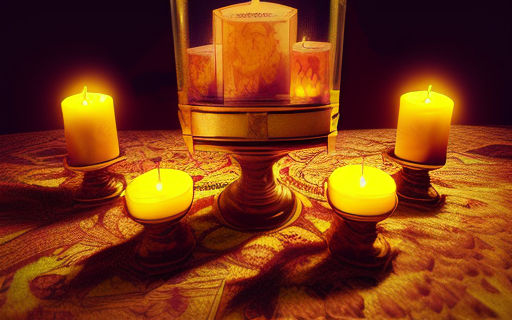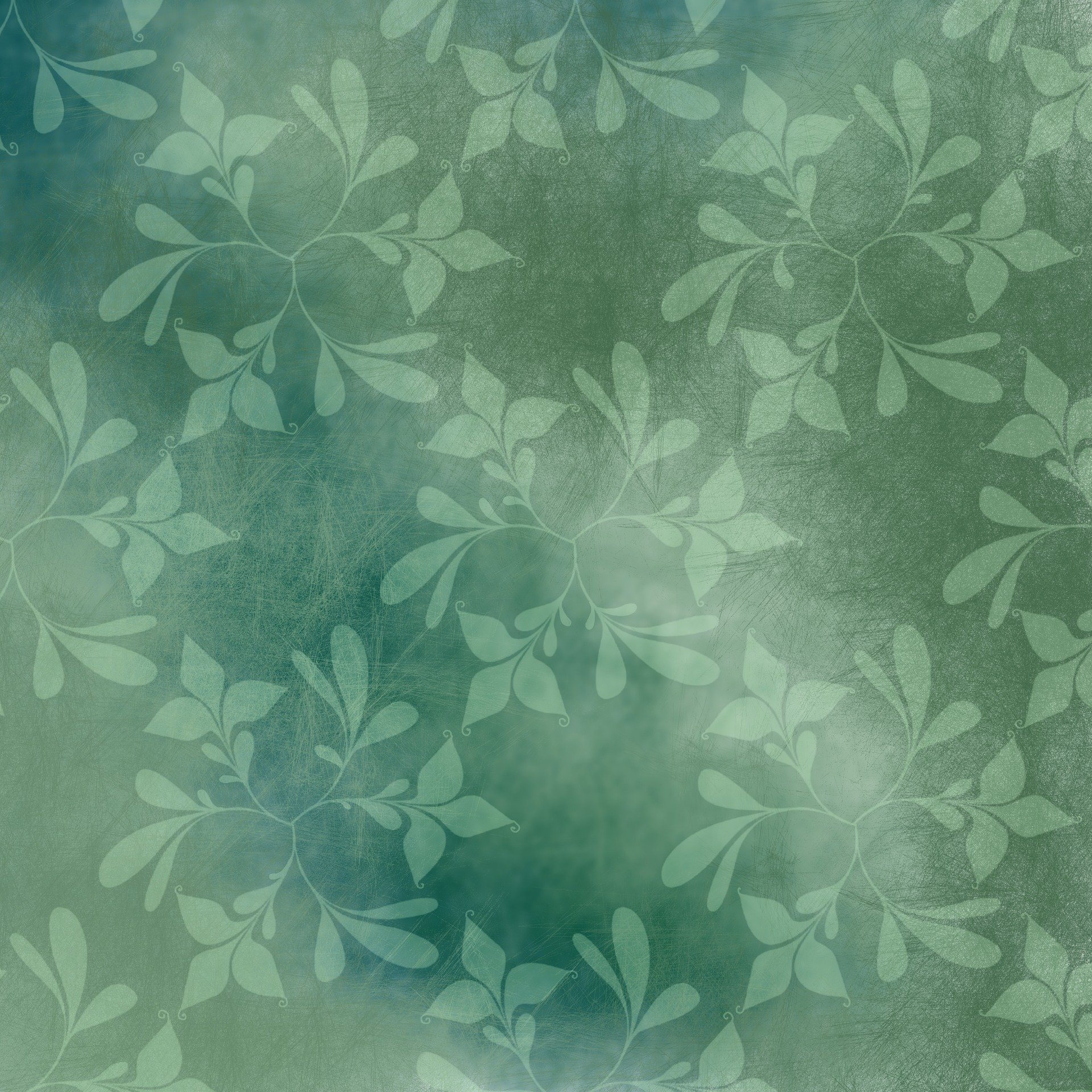Creating Your Own Rituals
To be effective, rituals must appeal to that side of human nature that is receptive to pleasure in an artistic sense while satisfying the intellect’s need for logical procession toward a goal. The artistic or poetic mind likes or dislikes without regard to conventional reasoning. People considered expert in artistic endeavors create works that stand critical analysis without the artist being consciously aware of the elements contributing to critical acclaim during the creation of the piece. Music, poetry, and the visual arts are measured against two standards.
When you make a purchase through links on our site, we may earn an affiliate commission. As an Amazon Associate I earn from qualifying purchases..
The first is objective; do we find the work pleasing for what it is without regard to logic or reason, i.e. does the song have a good beat and can we dance to it? The second standard is based on how expert the artist is at using those devices that the reasoning mind respects as a measure of expertise; does the tune follow the correct modality for its idiom, demonstrate harmonies in the proper keys, and adhere to the classic phrasings typical for songs of its type?
For poetry, the comparison would be between what emotional response the poem elicits as opposed to how well it meets a rhyming scheme. Professional critics adhere to this second set of criteria when reviewing the artist’s work. If you have ever found yourself in disagreement with the opinions of these “experts” over a particular poem, song, painting, or theatrical piece just because you like what they have analyzed as lacking those elements by which they define excellence, and have maintained your stand despite the critics.
You have made the first step toward creating successful rituals. The sights, sounds, and atmosphere of any ritual must appeal to that part of you that likes and consumes ice cream no matter how hard your rational mind wants to stay on a diet.
This emotional and unreasonable side must be balanced by discipline, or you will wind up weighing three hundred pounds. It is common for this portion of the personality to lie to its reasoning sibling, leading to some pretty bizarre rationalizations, like that ice cream is really very nutritious and the perfect way for you to get your fill of vitamins and minerals or that a cookie broken in half has let all the calories leak out and is therefore virtual diet food.
On the darker side, this “child” mind is also the source of self destructive patterns of addiction, and its ability to deceive and disrupt logical thought processes can kill. It is an excellent place to hide from reality, and it responds well to the most basic pleasures.
The “child” mind has no moral code and can allow us to behave in an almost purely instinctual way. It is completely self centered, disregarding anyone or anything that does not provide it with immediate pleasure. It has no concept of any time other than the present and has no conscience, which is a product of the rational mind. Much unhappiness arises from the totally independent functioning of these two sides of the same individual working toward their own goals.
The “child” mind is the home of Jung’s collective unconscious, the repository of those characteristics that all people have in common regardless of upbringing or training. This portion of the personality responds to stimuli in the most basic way and is heavily influenced by hormones and other chemicals that may be released into the body depending the immediate circumstances of a situation.
It avoids pain and seeks pleasure, and only through the disciplines of reason and logic can its responses be tempered. Without stimulation, whether external or internal, this portion of the mind tends to sit at idle, waiting to receive its next input. Because of its receptive nature, the “child” mind has been associated with the feminine side of the human personality, while the rational mind houses those traits associated with the masculine.
This division is not entirely correct and depends on exactly what one defines as inherently masculine or feminine behavior. The complexities of the human personality defy such pedantic attempts at classification. To truly understand the personality, the witch uses the very tools all people possess; the ability to observe and analyze rationally seasoned with a goodly amount of intuition and extrapolation based on the witch’s understanding of the self.
Concomitantly, witches spend a lot of time in reflective thought and meditation, use many methods of divination, and seek the opinion of spiritual guides before conducting a ritual. Knowledge of the self is the key to success.
The axiom “As above, so below” can be extended to “As within, so without.” Identifying with the subject of a ritual allows the witch to predict the outcome and to structure the ritual in such a way that it will please any entities that may be involved. The witch acts as the microcosm where work can be tested for its effectiveness within the macrocosm.
This principle applies equally to all rituals including those involving magic. Role playing after this fashion helps the witch to realize when some aspect of the work may be out of place and when too much force is being used to accomplish a magical feat.
To force magic upon someone that cannot handle the change can cause serious damage and prevent any healing that may have been intended. If a ritual does not contain elements that satisfy both sides of the mind, it cannot succeed.
A good ritual will delight the inner child with colors, sounds, sights, smells, and sensuality, while simultaneously appeasing the rational mind through logical associations, historical references, and the application of scientific methods. The more you can do to satisfy these requirements, the more likely you are to perform a successful ritual.
Suppose you are romantically attracted to someone who, while amicable toward you, sees you as just a friend. You decide to do a love spell to bring this person closer to you, hoping to stimulate in this person the same feelings that you have regarding the relationship.
The first thing to consider is whether or not getting closer to you is in this person’s nature. Does your love object have any roadblocks standing in the way, like an existing love relationship or a history of painful romantic experiences? You may be able to gather this information from mutual contacts, or you may find it useful to do a divination or consult your spirit guides. Use any tool that you trust to provide you with as much information as possible.
Forcing your way through negative barriers is certainly possible, but not always wise. In particular, never attempt to destroy a current love relationship in order to achieve your personal goals. You may at first succeed, but the threefold law is very clear about the disaster you will bring upon yourself eventually. Personal gain at another’s expense invites trouble.
The same holds true for magically bashing through a barrier that unleashes painful memories in your love object. The very feelings that you wish to promote may produce extreme anguish, so much so that, as romantic feelings arise, that person is likely to run and hide to prevent repeating the tortuous experience of loving and losing.
You have done your best to determine that there are no blocks standing in your way, and you feel ready to compose a rite that will produce your desired end. Define this goal as clearly as you can. With love spells, it is usually better to plant a magical seed and let the love grow as it may rather than to use more binding methods.
You may find with time that this particular flower has no place in your personal garden. Remember that as you bind, so will you be bound. Letting love follow its own course reduces the risk of binding you to a relationship that may prove entirely wrong for one or both parties.
Love magic can ease the way toward establishing feelings in your love object that reciprocate your own. Therefore, it is extremely important for you to know yourself and your own feelings very well. Meditate, consult your spirit guides, use divination, and by all means discuss your feelings with trusted friends.
Determine what’s right for you and your love object, and then go ahead and do it! The specifics of such a spell should include colors that you find conducive to creating “that loving feeling” in you. If you know the favorite color of the person you wish to attract or have noticed that the person dresses in a particular shade, use it.
If some smell reminds you of the person, you may want to mix its essence with a fragrance you prefer when you are feeling your most attractive.
You can use these in Circle during the rite in the form of incense or perfumes. Scenting yourself with this blend both during and after the rite will help you to focus on your goal. Everything that decorates your Circle should be after a fashion that would make your love object comfortable and attracted to the decor. Next, you should consult various tables of correspondences to determine what aspects are classically associated with the work at hand.
Meet as many of these conditions as you can, keeping in mind that any that you find especially disquieting should be omitted or substituted by others that are pleasing to you. Eliminate all negative influences when making these choices.
The tables speak in generalities. Narrow your selection to what is specific to your own work. During this selection process, you will become aware of your rational mind’s participation as it raises doubts about every choice you make, warning that you should not stray too far from the historical correspondences that have the wisdom of the ages to recommend them, “Who are you,” it will ask, “To tamper with such a time honored list?”
This is where you must reconcile your feelings with your demand for the facts of the work in detail. This reconciliation is for you alone to establish. Key to its resolution is that your rational side can be convinced by the “child mind” with relative ease.
Otherwise, none of us would ever eat ice cream as diet food. Your “child mind” lies quite convincingly, and your rational mind will accept these lies as truth because of its one inherent flaw; without evidence to the contrary, it cannot dispute what it is being told. (It also has a short memory. Try eating that ice cream while you’re standing on a scale.
Then give it an hour!) Next comes your selection of the exact activities you will perform during the rite. Again, these are quite personal. Typically, they will include chants, dances, songs, and the like, as well as what entities you may ask to be present and what natural forces you may want to use.
Always keep your goal in strict focus. If you have a singing voice that people find especially appealing, use it. If you have a talent for visual arts, try drawing a picture of your desired goal.
Poets find chants efficacious. Budding ballerinas should try dancing your way into your beloved’s heart. Whatever choice you make should touch your spirit and call it to the work.
Now to the work itself. Be open concerning the time you allow for completion of the rite. It is not uncommon for these things to take longer than expected, and knowing that you are making yourself late for some appointment does not help concentration.
Give yourself plenty of time to accomplish the work and to indulge in any activity that you might be inspired to perform that wasn’t in your original plans. The Ancient Ones are seldom silent observers in matters of magic or the heart, so pay attention to their expert contributions.
Do not rush from one step to the next as though you must meet some timetable. Ritual shares much in common with a gourmet feast. Savor each portion. Experience the flavor of every morsel. Never hurry, and don’t talk with your mouth full. Maintain full concentration on what you are doing at the moment. The whole will take care of itself as long as you pay attention to the separate parts.
Project your entire being into your work. Hold nothing in reserve. You should feel completely drained by your effort. Launch the power you have summoned to yourself throughout the rite with the cosmic force.
You are dealing with pure energy. The more you pour into the work, the more effect the work will have. When you are sure that you have given the rite your best effort, ground any leftover energy by distributing it mentally to all who might share the same goal in their own lives. Close the Circle with all due amenities. You should be exhausted. Eat, rest, and bathe in the afterglow of magic.
Once you have completed a ritual that involves magic, it is important to hold the mental image of your goal already being accomplished. This does not mean that you should exhibit behavior that may be harmful to yourself or others.
It is unwise, for instance, to go wild with your charge cards after casting a spell to increase your wealth or to fling yourself bodily at the object of a love spell. Rather, carry yourself as though you have complete confidence that your spell is working at that very moment and that you need not worry yourself about it.
Anxiety can ruin the best magical work. Eliminate self doubt and know inside that you have made your best effort. Leave yourself no excuses for failure. Give your work time to succeed or fail before subjecting it to analysis, and analyze your successes with the same critical eye as you would your failures.
While it is important to understand why a spell has failed, it is much more important to know why your magic has worked so that you can repeat the effort in the future. You are not trying to learn how to fail, but how to succeed. Guilt can destroy the best magic, and some novice practitioners feel bound to an altruistic approach in all such work, denying their own needs because they see using magic to achieve personal goals as “cheating.”
They feel perfectly comfortable performing rites for others who need help but refuse to help themselves in the same manner. Know that the gods do not expect you to live a monastic life clothed in sack cloth and ashes. You are certainly entitled to improve your own station through ritual and magic.
As you progress within Wicca, the spiritual maturity you gain will provide a quite adequate scale against which to measure your work. Do not feel that you must not use magic to your own benefit. If for no other reason, remember that success in magical endeavors is bound to how well you know the person for whom you are doing the work. Whom do you know better than yourself? As with any skill, magic requires practice, and you can expect to fail with some frequency as you perfect your technique.
Therefore, it is, in fact, advisable to keep your first efforts simple and concentrate on your personal needs. While you should scrutinize your work to be sure it will do no harm to others, do not hesitate to work magic for yourself. It is far better to fail at a personal goal than to fail trying to help others.
You will also find that your confidence will increase as you begin to see the positive effects of magic in your own life. It is extremely difficult to help anyone from a position of weakness and doubt.
There are four important qualities that you must develop in yourself for your work to succeed; will, imagination, faith, and secrecy. Consider these as though they were muscles that need conditioning before performing a difficult athletic feat, and exercise them accordingly. Do not expect Olympic caliber results unless you are willing to put forth the necessary effort.
Magic is HARD work, and you must be absolutely sure that you have trained your “muscles” to the best of your ability. Few of us would subject ourselves to ridicule by attempting a complicated gymnastic routine before we were certain that our training gave us the skills necessary to do it without embarrassment. The same is true of magic. Practice with your own problems before taking on the world’s woes.




















